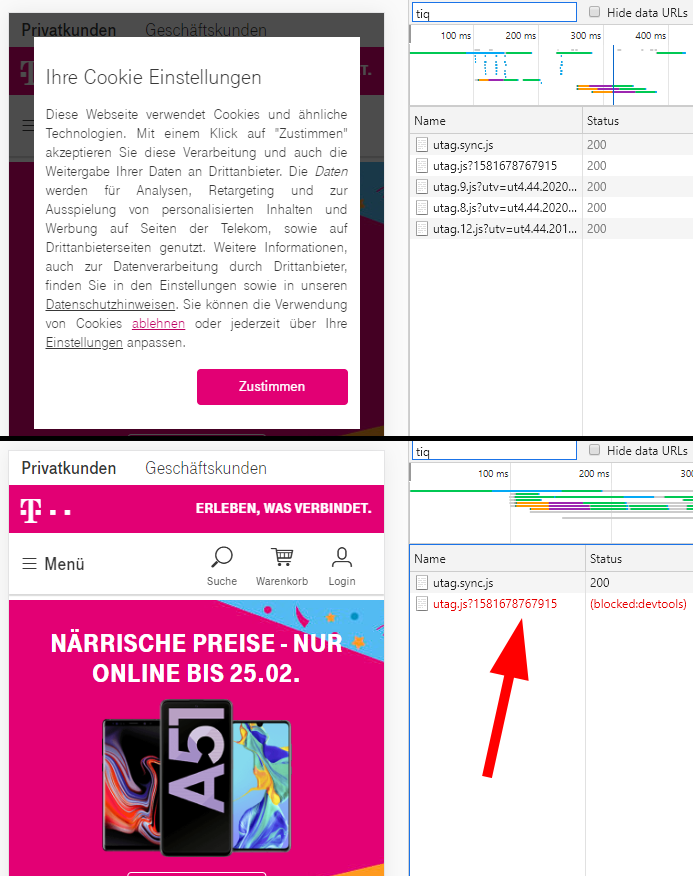
In the previous articles on the subject of “Flying blind through online attribution“, I primarily dealt with the technical causes. In this article, I would now like to look at the topic from a legal perspective.
October 1, 2019 is the day that many online marketers will remember. It was the day on which the EUGH made a groundbreaking ruling – the so-called “cookie ruling”. Although the proceedings did not directly deal with cookies, but rather with how the defendant (Planet49) obtained the consensus, the ruling has since caused some headaches in the online marketing world. The court made it clear that consent for the setting of cookies must be voluntary and active (opt-in).
Subsequently, there were numerous articles on how such an implementation could take place and what is now permitted and what is not. This discussion is still going on and will certainly drag on for several months, if not years. What is becoming clear, however: The use of third-party tools such as Google Analytics or Facebook is no longer permitted without the user’s consent – see “Data protection authorities position themselves: Use of Google Analytics only with consent” (German).
What might the approval look like?
Disclaimer: I am not a lawyer and do not provide legal advice or give specific instructions. Rather, the article represents my personal interpretation of the legal situation.
The big question everyone is now asking: What exactly does approval have to look like? Most providers are now trying to obtain consent via so-called content banners. The layers of Usercentrics, Cookiebot, Borlabs and others can now be seen everywhere – no matter which page you visit, you will always be greeted with the message “This page uses cookies – please confirm…”.
But actually the question should be different: How can I obtain as many consents as possible without annoying the user and at the same time not run the risk of violating the provisions of the GDPR. One thing is clear: There is a fine line between online tracking and liability risk (due to missing or incorrect content).
The more legally compliant you create the content banner, the lower the probability that the user will agree. Conversely, this means that you inevitably lose part of your web analysis and attribution. Because without consent, you cannot use third-party services such as Google Analytics, Retargeting & Co. – ergo any rejection has a direct impact on reporting.
How can tracking be done in the future?
Currently, most people solve the problem by keeping their current tracking and marketing setup and simply adding a cookie content banner. What they hope is that the user will be “consent-tired” and simply agrees.
In my opinion, however, this is too short a view. There is still the risk that the users simply refuse – with the result that the tracking and thus the attribution of conversions is distorted (no consensus = no tracking = no reporting). On the other hand, there is also the risk that at some point AdBlockers or other browser extensions will react. Finally, the content layer represents an excellent single point of failure. Depending on how the content layer is configured, an AdBlocker would only have to block the content layer and no further tracking tools would be loaded. Correctly implemented, the third-party scripts may only be triggered when the user confirms this with Ok. However, if this is blocked, the Ok can never be given.
I have tested this with a couple of bigger online providers – including e.g. telekom.de. If you block Tealium’s script, the trackers that should be loaded when you click “Accept” will not be loaded.

The consequences
While the measurement loss in the previous challenges was 5-20% in each case, it is much higher for the topic GDPR/ePrivacy. Which user would willingly and voluntarily agree to the tracking? From conversations with colleagues, I found out that the approval rates are between 20-70% – which means that 30-80% of users reject the tracking! And the high approval rates were only achieved by “borderline” cookie layers.
With a measurement loss of 20%, one can still calculate with statistical extrapolations. At 80%, however, this is hardly possible in a serious manner, especially since there is a risk of “consensus bias” (a statistical distortion due to non-representative data). Automated marketing solutions such as RTB, custom audiences, conversion tracking, etc. would also be directly affected, with which the performance of the campaigns downscaled automatically.
No time for pessimism
It may be that my article here seems too pessimistic – but it is not. I see the current situation as a challenge – and I love challenges! In computer science, people always talk about problems; and problems have to be solved. Sometimes they are simple, sometimes difficult. No doubt – the topic of attribution, i.e. the correct assignment of conversions to channels, is one of the more difficult ones. But the times when you could easily integrate all kinds of third-party scripts and track everything via cookies are over.
Today the efforts are greater – but they are solvable, although certainly with a few limitations. In my last contribution to this series I will draw a conclusion and give some recommendations for action.
